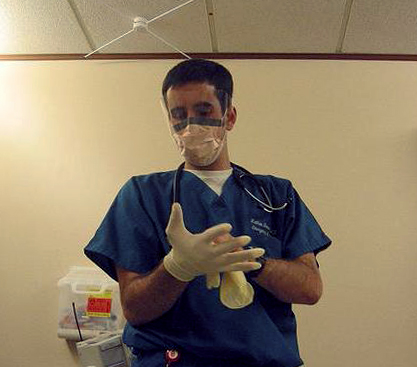
The Globe and Mail reports that the death rate for cancer has fallen dramatically over the past generation.
According to new data from the Canadian Cancer Society, Cancer deaths have dropped 21 per cent in men and 9 per cent in women between 1988 and 2007. In men, that means fewer are dying when it comes to the top four cancer killers of lung, colorectal, pancreatic, and prostate cancers. For women, the story is similar, with one major difference: colorectal, breast, and pancreatic have all gone down, but lung cancer deaths have skyrocketed over the past few years. Thankfully, though, even those have stabilized when it comes to the bigger picture.
So why has the cancer death rate gone into decline? The Cancer Society attributes the falling number to fewer people smoking, improved treatments, and earlier detection. At the moment, slightly more men than women (52 per cent versus 48 per cent) die of cancer, but the gender gap is closing. In the past, more men than women smoked, but now young women are more likely to become new smokers and fewer men are smoking than ever.
An estimated 186,400 new cases of cancer will be diagnosed in Canada this year (not including the 81,300 cases of non-melanoma skin cancer that will happen this year), according to predictions from the Canadian Cancer Society.
More than two thirds of people with cancer survive for at least five years, which makes critical illness insurance more important than ever. It’s great news that Canadians diagnosed with the the world’s most lethal cancers are living longer. Unfortunately, the longer you live, the more expensive life gets, as treatment costs pile up and the loss of income from work takes its toll. This is where critical illness insurance can help.
Developed by South African heart surgeon Dr. Marius Barnard in 1983, Critical illness insurance delivers a lump sum payout upon diagnosis of up to 22 critical illnesses, including cancer, stroke, and heart attack. Though the premiums are generally about four times higher than those for life insurance, the payout can be used any way the insured sees fit — from cross-border or overseas treatment to family vacations.
Some policies have a variety of riders that can be attached, including critical illness for children and a return-of-premium option upon death of the of the policyholder. Some policies also return all of your premiums up the close of the policy (say, age 65, 70, or 75) if you do not make a claim the entire time you have the policy. All critical illness policies in Canada also come with a feature called Best Doctors, which gives the insured personalized diagnostic and treatment advice from the world’s best specialists for the illness they are suffering from, 24 hours a day and seven days a week.
It’s important to note, however, that most critical illness policies come with a survival period of at least 30 days, so the insured must survive with their diagnosis for 30 days before they can collect their payout. Qualifying for an individual critical illness policy can also be difficult because the insured cannot have any pre-existing conditions or have survived a critical illness recently.
However, there are some guaranteed issue policies out there that don’t dig into the insured’s health history. It’s perfect for the hard-to-insure, but the face amounts are not as great as they would be on an individual plan, they tend not to cover as many illnesses as an individual plan, and the premiums may be a little bit more expensive than an individual critical illness plan.
For more information on critical illness insurance, please call as at 1-866-899-4849 and visit our Critical Illness Insurance Quote Page